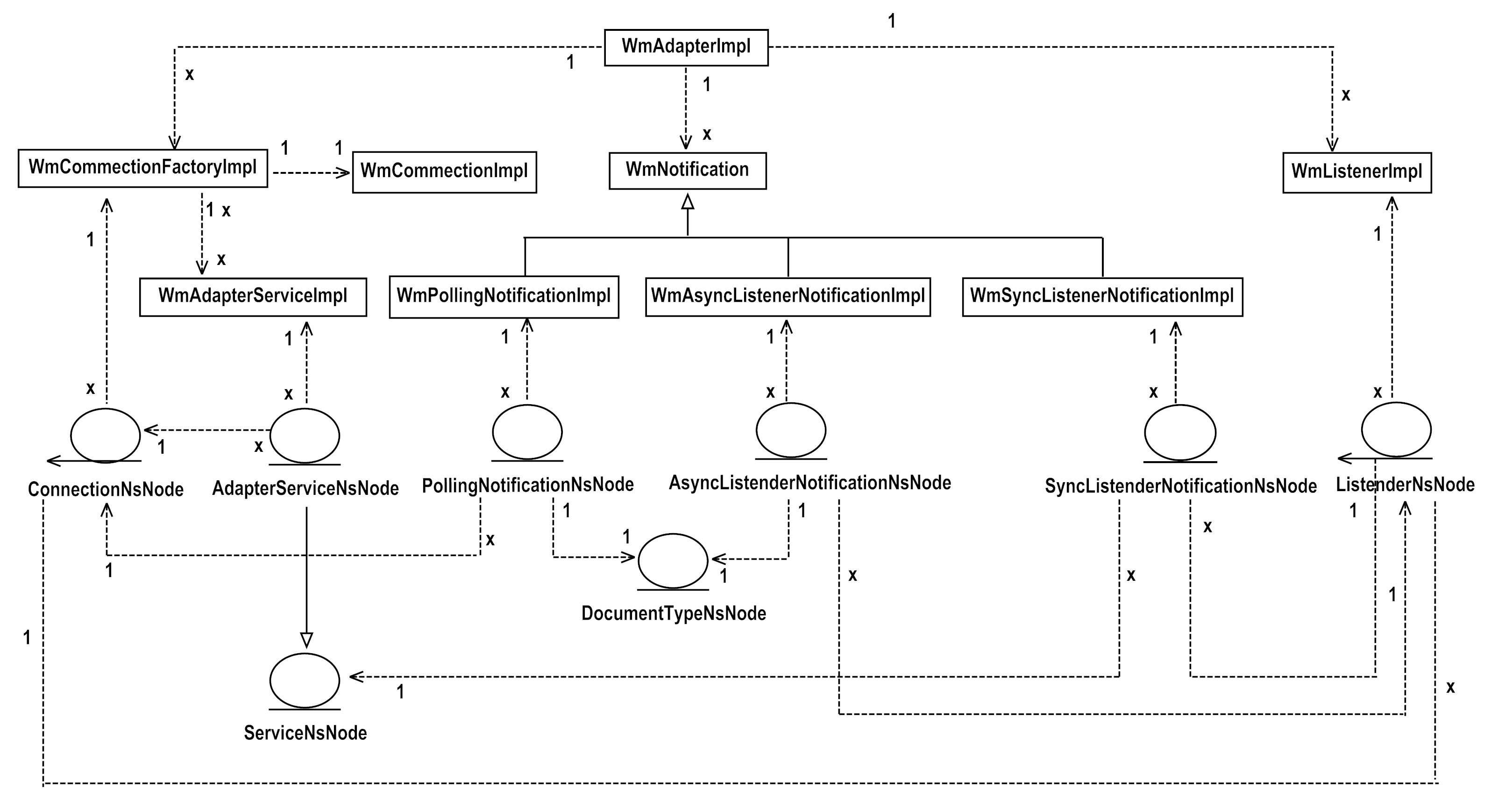The Runtime Conceptual Model
At run time, the adapter services and notifications communicate with the adapter resource to perform the function for which the adapter was created. Designer provides facilities for testing adapter services and notifications.
Although the following diagram is not strictly UML-compliant, it shows the relationships between the implementation classes of an adapter and their corresponding namespace nodes created at design time.
Relationships between adapter implementation classes and namespace nodes
In the diagram, entity icons represent namespace nodes, while standard class icons represent the implementation classes. The (unlabeled) dependency lines show direct references between classes and/or nodes. Thus, the adapter implementation class directly references supported connections or notification templates by directly referencing the connection factory and the notification implementation class. The connection factory for each connection type references the service implementation class of each supported adapter service template.
Each namespace node depends on an implementation class. The implementation class for each node provides metadata that describes the data that is included in the node at design time. The node provides parameter settings that are passed back to the implementation class when that class is executed at run time. Note that service and notification nodes require a reference to a connection node that provides access to the resource.
For more information, see
Overview.

